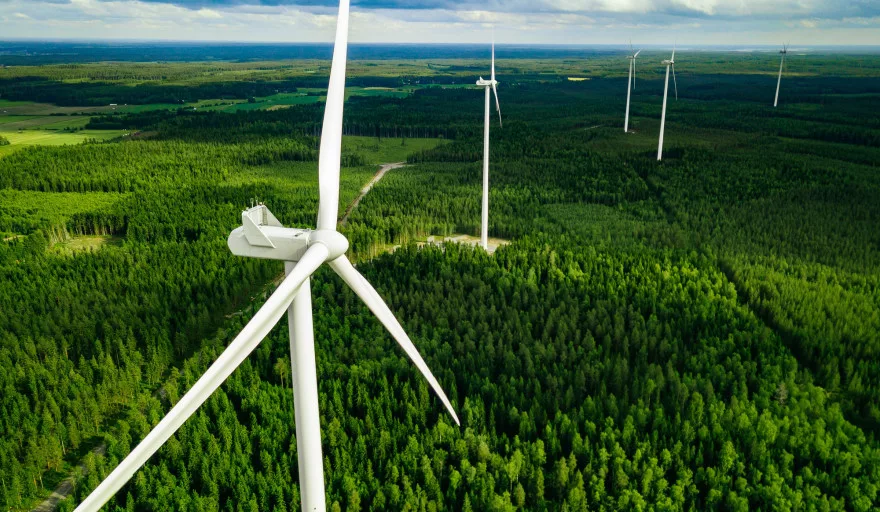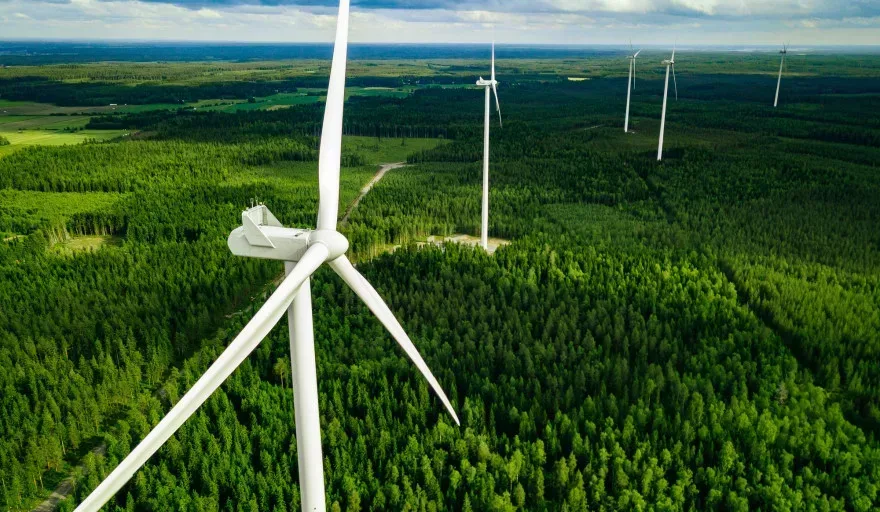
Can hydropower offer the solution to the African continent’s need for sustainable electrification?
Written by: Dani Redd
While Africa is home to 17 percent of the world’s population, it uses just four percent of the world’s power.
Written by: Dani Redd
While Africa is home to 17 percent of the world’s population, it uses just four percent of the world’s power.
Africa’s access to electricity varies across the region – while North Africa is almost entirely electrified, in some Sub-Saharan African countries electrification rates are below 30 percent. It is estimated that around 600 million people across the continent lack access to electricity, many of whom live in remote rural areas. Demand will only rise with population increase and a drive towards industrialisation. However, Africa is in the exciting position of being able to develop its economy using renewable and efficient energy.
One of the key renewable resources is hydropower, which accounts for over 15 percent of electricity produced in Africa.
In some countries, including Malawi and Zambia, hydropower accounts for more than 75 percent of installed capacity. However, according to a report by the international hydropower association, Africa has the world’s highest percentage of untapped hydropower potential, only utilising 11 percent. Can hydropower offer the solution to Africa’s need for sustainable electrification?
Hydropower: Benefits and challenges
Hydropower relies on harnessing the kinetic energy of water and using it to generate electricity.
A typical hydroelectric plant consists of a reservoir where water is stored, a dam which controls water flow (smaller projects rely on pumps or river flow to generate water movement), and a plant where electricity is produced. When the dam opens it releases water which flows through an intake and pushes the blades of a turbine, which in turn spins a generator. The amount of electricity generated depends on the amount of water and the speed with which it moves.
African governments are becoming aware of the importance of hydropower in improving access to electricity and including it in ambitious energy plans.
Ethiopia has a target of 100 percent electrification by 2025 (its current rate is 45 percent) – in early 2020 Ethiopian Electric Power announced the commissioning of the Genale Dawa III hydropower project, which will have a total installed capacity of 254.1 MW.
Meanwhile, in Uganda, two storage hydropower projects were commissioned in 2019 – Isimba (183.2 MW) and Achwa II (42 MW) – while an extra 35.25 MW of additional capacity was added to existing projects through the Global Energy Transfer for Feed-in-Tariff (GET FiT) programme. This extra capacity may see customers paying a reduced tariff for electricity. Many other large-scale hydropower projects are under construction in Africa.
There are many reasons to be optimistic about hydropower. For a start, water offers an abundant source of renewable power, allowing African countries to meet sustainable development goals through electrification. Second is that regional power pools on the continent – East African Power Pool (EAPP) – are playing an ever-increasing role in sharing power produced by large-scale hydropower plants. Neighbouring countries can therefore produce and sell electricity regionally, meaning governments are able to achieve greater connectivity while lowering production costs.
But large-scale hydropower is not without its challenges.
“Often the construction of large hydropower dams involves resettling communities due to the inundation of the dam basin,” explains Ashwin West, Investment Director of African Infrastructure Investment Managers (AIIM), in Power magazine.
“This can result in communities being affected through disruption to livelihoods and community cohesion. Furthermore, the flooding of large dam basins can also result in significant disturbance to local fauna and flora, which is often pristine or endangered, given the remote locations chosen for large hydropower plants.”
Large-scale hydropower plants require lengthy development and construction periods and necessitate planning for environmental impacts further downstream.
Another fundamental challenge to hydropower is Africa’s climate of wet and dry seasons. According to a study conducted by researchers from the London School of Economics, many of Africa’s new hydropower projects are located in areas of high rainfall variability, which will be further intensified by climate change, leaving them vulnerable to drought. These new dams could put the security of supply at risk. In 2017, when Malawi’s Shire River dropped to critical levels, it impacted hydropower supply and led to rolling blackouts across the country.
The way forward
The LSE study finds that as rainfall patterns vary during regions, power sharing mechanisms – such as regional power pools – can ensure an increased security of power supply. Infrastructural and political issues, as well as weak cooperation and institutional capacity, will need to be resolved to ensure greater effectiveness. The study also emphasises the need for hydropower and infrastructure planning to incorporate climate risks, considering the location of dams and how potential rainfall patterns might affect power supply.
Many public and private stakeholders believe that smaller-scale hydropower projects are the way forward for Africa.
These smaller projects can be powered by the flow of a river, and do not necessitate large-scale building of dams. This mitigates environmental damage and social problems associated with resettlement. Having several geographically dispersed small hydro plants can also help protect against drought conditions. Another benefit of smaller projects is that they are less capital-intensive, meaning that finding funding to build them is much easier.
One example of a successful small-scale project is Rubagabaga Hydropower Plant, a 445 KW run-of-the-river project in north Rwanda. This is East Africa’s first hydropower project implemented using a containerised turbine and generator and was built with very little mechanical intervention. This innovative project is a public-private collaboration and has created over 1,000 jobs to date, as well as enabling more locally initiated industries.
“It is one thing to build a project that just hooks up the line and adds power capacity to the utility. As a company, we really focused in on what it would do for the community and its productive-use equipment, its industrial park, its community library, its agricultural centre of excellence – it wasn’t just power to line up the grid. This project was something that could bring the community together and make a difference. This is what we’re most excited about,” explained Dan Klinck, Managing Director of East African Power.
The Rubagabaga Hydropower Plant recently won the Small-Scale Sustainable Energy Project category of the prestigious African Power, Energy & Water Industry Award.
Meanwhile, even smaller projects (known as mini hydro) harness hydropower and connect to minigrids. This means that mini hydro projects can be established in remote, rural areas out of reach of the grid, and have the potential to be a valuable tool for development by stimulating economic enterprises. However, these rural areas suffer from inadequate technical resources (including lack of technicians and spare parts), which makes it difficult to maintain and monitor grids. It is therefore fundamental that planning mini-hydro projects takes training, maintenance and knowledge transfer to local community members into account.
However, despite its challenges, hydropower offers a vital way for Africa to provide clean energy to its inhabitants. To date, just under 90 percent of the continent’s hydropower potential is untapped. But across Africa, public and private stakeholders are working together to change this and raise awareness of hydropower’s role to play in sustainable development.
“The role that energy, or Sustainable Development Goal (SDG) 7, plays, is immense in the overall future sustainability of our planet. Particularly, hydropower has the lion’s share, especially in developing countries, due to its proven technical and technological ease and relatively low cost per MW investment,” writes Hon Seleshi Bekele, Ethiopia’s Minister of Water, Irrigation and Electricity, in the 2018 Hydropower Status Report.






























